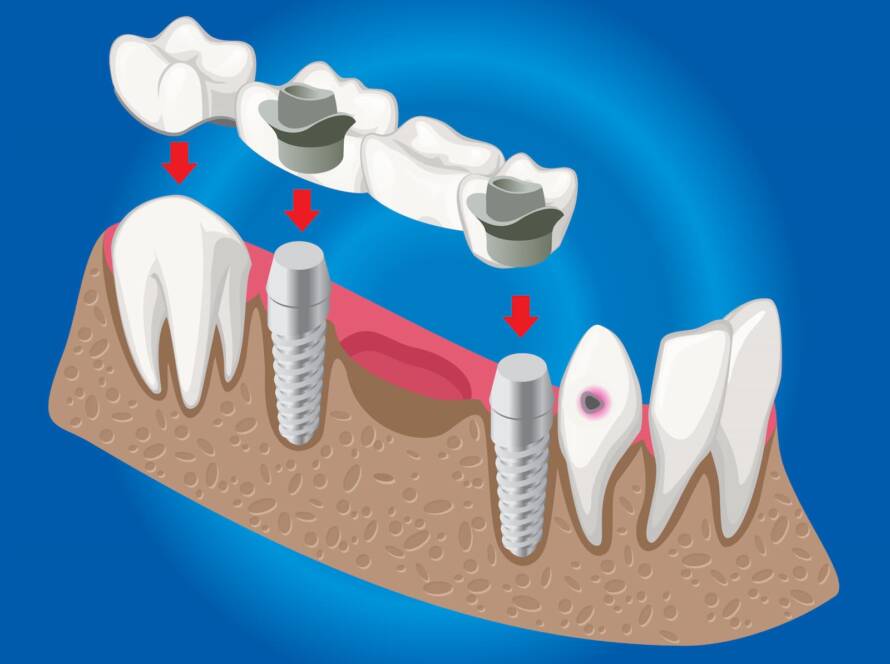Is Canal Treatment the Same As Dental Implant?
Canal treatment is often considered as an alternative to dental implant by many people.
However, dental implant treatment is more expensive and takes longer than canal treatment. Additionally, implant treatment requires a specific bone density, so it may not be suitable for some individuals.
Canal treatment is a method of cleaning and filling the canals within a tooth to preserve its vitality.
This treatment is performed to prevent infection or decay within the tooth. Canal treatment allows for the preservation of the tooth without extraction and does not require a prosthesis to replace the tooth.
Both methods are evaluated by your dentist and the most suitable one will be chosen for you.
Your dentist can provide you with more information about canal treatment or implant treatment and offer recommendations on which one may be more suitable for you.
What is tooth canal treatment?
Tooth canal treatment is the treatment of the pulp area, which is the living tissue within a tooth that makes up the tooth’s vitality.
The pulp consists of blood vessels, nerves, and tissue within the tooth and makes up the living part of the tooth. Tooth canal treatment may be necessary if the pulp becomes damaged due to decay, severe impact, or other causes within the tooth.
Tooth canal treatment aims to clean and remove infection within the tooth.
During treatment, a file or diamond file is used to clean and remove the infection within the tooth and to damage the living tissue within the tooth.
Root canal treatment is a procedure where the decay and infection inside a tooth is cleaned and then a filling or sealing material is placed inside the tooth.
This material fills the empty space in the tooth and prevents the infection from returning.
Root canal treatment is usually necessary when the live tissue of a tooth is damaged and helps the tooth to heal and strengthen.
Dental implants are devices that are placed in the jawbone to replace missing teeth.
They are typically made of materials such as titanium and have a low likelihood of causing a reaction in the body.
When a dental implant is placed in the jawbone, it becomes integrated with the bone and is accepted by the bone cells.
This process takes a few weeks and helps the implant to become anchored in the bone. An abutment (connecting element) is then placed on the implant and a custom-made dental prosthetic is placed on the abutment.
Dental implants are used to fill the gaps caused by missing teeth and support the jawbone while also improving the appearance aesthetically.
They also prevent the jawbone from deteriorating by filling the gaps caused by missing teeth and preventing the other teeth from shifting.
Which is better, root canal treatment or implant?
It depends on the individual’s situation. Implant treatment may be more suitable depending on the person’s gum health and bone tissue condition.
This method involves placing a titanium artificial tooth root in place of the missing tooth and creating a new tooth.
The advantages of implant treatment include strong and stable teeth, the ability to maintain a natural appearance of the teeth, and the ability to prevent tooth loss.
Canal treatment is a treatment that is applied when the pulp tissue inside the tooth is decayed or dead. During this treatment, the decayed tissue inside the tooth is removed and a filling material is placed inside the tooth to repair it.
The advantages of canal treatment include preventing tooth loss and maintaining teeth for a longer period of time.
Both treatment methods can be determined based on the examination and evaluation of the dental surgeon.
To determine which treatment method is more advantageous between the two, it is recommended to consult with your dental surgeon and make a decision based on their recommendation.
CANAL TREATMENT OR IMPLANT, WHICH IS MORE ADVANTAGEOUS?
When considering the advantages and disadvantages of canal treatment or implant, we can look at the following points:
1.Implant treatment involves placing a artificial titanium tooth root in place of the tooth and creating a new tooth in its place. Canal treatment is a treatment applied when the pulp tissue inside the tooth is decayed or dead, and the decayed tissue inside the tooth is removed and a filling material is placed inside the tooth to repair it.
2.The advantages of implant treatment include strong and solid teeth, maintaining the natural appearance of teeth, and preventing tooth loss. The advantages of canal treatment include preventing tooth loss and maintaining teeth for a longer period of time.
3.The disadvantages of implant treatment include the expensive cost and the lengthy process of the treatment. The disadvantages of canal treatment include the potential for loss of tooth strength and the somewhat tedious nature of the treatment.
- “Implant treatment may be more suitable depending on the gum health and bone tissue condition, while root canal treatment is applied when there is decaying or dead pulp tissue in the tooth. Both treatment methods have their own advantages and disadvantages and which is more advantageous depends on the individual’s situation. You can determine the most suitable treatment method by consulting with your dentist.















